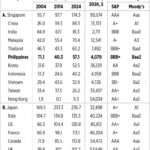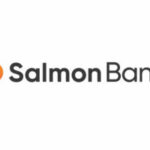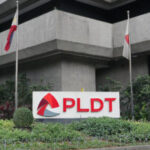
By Bjorn Biel M. Beltran, Special Features and Content Assistant Editor
The Philippine real estate market is showing remarkable resilience due to the country's economic momentum. While economists believe natural disasters and the ongoing corruption scandal involving government flood control projects could dampen economic growth in the third quarter, the Philippines has maintained an optimistic target of 5.5%-6.5% growth amid a gloomy global environment.
Inflation has remained moderate at an average of 1.7% in the first nine months of the year. Recently, the Bangko Sentral ng Pilipinas Monetary Board lowered the benchmark borrowing costs for the fourth consecutive meeting, bringing the policy rate to 4.75%.
Such an environment led to adverse conditions in the property market. Specifically for the residential sector, while Metro Manila is seeing slow progress for mid-income condominium projects, the same cannot be said for luxury and high-end developments.
According to real estate analysts Colliers Philippines, sluggish traction in mid-income markets prompted major property developers to offer “aggressively attractive and innovative” ready-for-occupancy promos to lure buyers, including deep discounts for spot cash purchases, extended terms, free appliances and other concessions. The promos appear to be working, with Colliers recording better take-up in practically all condominium price segments in Metro Manila.
“What we are seeing now is a more pronounced flow of luxury – high-end property developments dominating supply through new launches and demand, as demonstrated by positive net take-up for luxury to ultra-luxury units,” Colliers said in its letter. Q2 2025 property market report,
It's clear that the Filipino market still has a healthy appetite for new developments. The slow growth within Metro Manila only signals to developers that Filipinos are becoming more savvy with their real estate purchases, especially with their location and price. Property companies have become more prudent with their launches within and outside Metro Manila, said Colliers, taking advantage of a consumer base that was “awash with cash and actively taking advantage of capital value appreciation opportunities even outside Metro Manila.”
A separate report from property experts Cushman & Wakefield notes that decentralized development is becoming more prominent as investment activity spreads out of the country's capital into regional centres, driven by improved infrastructure and local economic growth.
according to the firm Q2 2025 Philippine Office and Investments MarketBeat ReportUrban professionals and mid-market buyers are driving demand for suburban centers in Cavite and Laguna. Regional centers such as Cebu, Clark and Davao are gaining traction as decentralization creates future-ready growth opportunities in secondary markets.
“The Philippine real estate market reflects the country's economic momentum, driven by strong consumption patterns, tourism recovery and growing logistics demands. Each region is adapting to the growing needs of end users, creating long-term opportunities for developers and investors,” said Claro Cordero, director and head of research, consulting and advisory services at Cushman & Wakefield.
“Investors are now turning their attention to secondary markets, which offer more attractive entry points and opportunities for diversification,” Mr Cordero said.
symbol of luxury
At the same time, sustainability is also taking center stage in these developments, with property companies increasingly prioritizing green-certified and disaster-resilient buildings to align with long-term environmental goals.
The idea of a residential community that gives rise to a holistic, sustainable lifestyle has become the defining trend of the next generation of real estate. As hybrid work models become more popular among millennials and Gen Z professionals, developers have begun to focus on offering wellness-oriented spaces and flexible living conditions.
“These trends reflect a shift in how businesses view real estate – no longer just as a functional space but as a strategic asset that supports growth, sustainability and employee well-being,” Mr. Cordero said.
This is especially true for higher income families. A flood of new luxury residences are flooding the market, taking advantage of the demand for living spaces that prioritize good design, privacy and high-end amenities.
“Today's high-end investors value tourism-driven developments that seamlessly integrate thoughtful design, privacy and personalized service with lifestyle-enhancing amenities such as wellness amenities, curated vacation spaces and tech-enabled living,” Elizabeth Ventura, president of luxury real estate developer Anchor Land, said in an email.
“For them, true luxury lies not only in quality of life but also in long-term wealth preservation – owning a tourism-inspired property that balances exclusivity, functionality and investment stability in a prime, strategic location.”
Sustainability, Ms. Ventura said, has become a symbol of true luxury. Investors are increasingly attracted to properties that emphasize efficiency, sustainability and long-term livability. Modern developments now commonly include green spaces, natural ventilation, energy-efficient systems and smart home technologies, reflecting a broader shift towards wellness-oriented and environmentally conscious design.
“We have embraced this development at Anchor Land. Integrating smart technology is no longer an afterthought, but a key principle embedded in our design process. Our team actively keeps pace with the latest advances in green architecture and collaborates with regional experts to ensure that our development meets global sustainability standards,” she said.
“We also place great importance on open, breathable spaces – seen throughout our projects offering everything from resort-style settings to gardens thoughtfully woven into expansive outdoor amenity floors – that promote a lifestyle focused on wellness, comfort and balance,” Ms Ventura said.
Real estate has always reflected the economy, but today it also reflects changing aspirations. A resilient economy may have opened doors, yet it is this understanding that is defining the next evolution of the Philippine residential property market.
Developers are no longer competing on scale or speed, but on purpose – designing homes that use less, last longer, and are in line with the way Filipinos really want to live.










